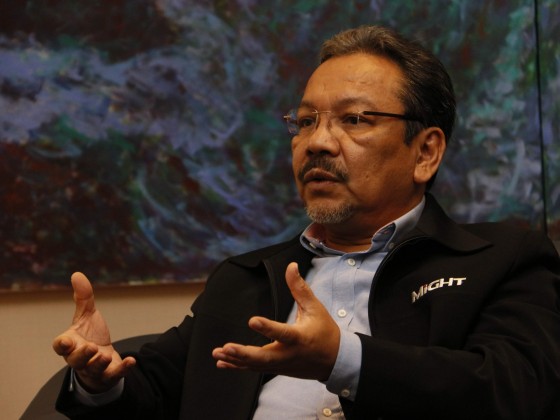by | ARIJ VAN BERKEL, PhD | Director, Research | Lux Research
Arij is a Director at Lux and leads the energy research team. Arij and his team provide strategic insights in the rapidly changing landscape of energy supply to mobility, residences, and industry. Prior to joining Lux Research, Arij worked for Shell and TNO, the public research and technology organisation of The Netherlands. At Shell, he conducted research into process safety and combustion. At TNO he worked on a variety of topics including food preservation, emission reduction and biomass conversion. His last position there was innovation director for the chemical industry, P&L responsible for TNO’s entire project portfolio for the chemical industry and liaising with the Dutch and EU governments on innovation policy.
Arij holds an M.Sc. degree in mechanical engineering from Twente University and a Ph.D. from Eindhoven University.
As we enter the third quarter of the global pandemic, the fall-out of the crisis is taking more shape. During the initial lock-downs, road traffic was sometimes up to 70% less than usual. Even though it has since slightly recovered, there are still about 30% less cars on the road. Air traffic is still over 60% less than usual. Most countries are reporting economic growths that are more than 10%-points less than originally expected for 2020. The economic impact of the pandemic will stretch well into 2023 and some industries such as the oil industry may not recover until 2025. It is our estimate that the oil industry alone will lose $8 trillion in revenue as a result of the pandemic.
This puts COVID19 on par with the major transformative crises from the past such as the Great Depression, WWI and WWII, and the oil crises of the 1970s. Looking back at those crises from the past, the common denominator is that they have all boosted some “lingering” societal and technological changes. They have accelerated already existing trends and technologies and made them prominent.
A new technology or a new way of thinking in society doesn’t materialise overnight. During a crisis there is no time to invent entirely new technologies. Instead, a crisis propels existing solutions that were previously struggling to become relevant to prominence. The Great Depression of the 1930s resulted in the construction of major infrastructure. It turned out to be the final nudge to connect a majority of households in Europe and the US to electricity and to make cars affordable for everyone. The oil crises of the 1970s were the ultimate wake-up call to the oncoming environmental crisis. Even though the debate about the consequences of unlimited economic growth had been lingering already, the oil crises raised awareness and resulted in the Club of Rome report “Limits to growth” and the UN “Brundtland committee” that published the landmark study “Our common future”.
So, what are the “lingering” societal and technological changes that the COVID19 crisis can accelerate? I think there are three categories of changes that will be accelerated by this crisis.
COVID19 is changing the way we travel and work
Teleworking, virtual meetings, telemedicine and all sorts of other remote or virtual working were already lingering long before this crisis. Many people have been debating the possibilities and advantages of being able to connect and work across the world without travel. For examples there were already experiments with remote surgery using robots and haptic feedback controls.
The lock-downs have forced people to make use of the possibilities offered by the internet to work remotely at full scale. Where organisations have previously been cautious and apprehensive to use these new ways of working, they have now been forced to try them at scale and to invest in the infrastructure required for it. As a result, virtual meetings and remote working have experienced a breakthrough. They have been promoted from a lingering, promising technology to a mainstream solution. We are now only at the start of this development. With the infrastructure in place and the mindset to embrace the possibilities we will see many new ways of using the technology to boost productivity and make cooperation easier.
COVID19 is enabling the creation of local value chains
During the initial shortage of medical supplies (with Malaysia particularly important for gloves), countries scrambled to created their own production and, in many cases, succeeded. The lesson was that creating local value chains is not as hard as everyone thought. Globalisation is not a law of nature; it’s an economic choice that can be reversed if desired or needed. That “discovery” aligns very well with lingering sentiments in society that call for local ownership and involvement in value chains, such as evidenced by Naomi Klein’s book “No logo” (1999).
The realisation that local value chains can be created, will accelerate a number of technologies. It will help to boost biobased feedstock for chemicals and materials since local value chains require locally available raw materials. Similarly, it will accelerate technology for recycling and circular economy business models. It will likely also result in a scale-up of robot technology to make local production competitive with off-shoring to low-wage countries.
COVID19 boosts electrified personal transportation
Large-scale public transit systems are suspect in a time of a global pandemic. People seeking to avoid the subway or crowded buses and trains are looking for affordable, convenient and fast alternatives. The winning options appears to be electric bikes and scooters. As cities see less cars on the streets, there is more room for bikes and scooters. This also helps to reduce air pollution and this mode of transportation is more affordable to many. Companies like Uber are already hedging by investing in bike and scooter sharing companies. The growth of electric bikes and scooters will be faster than that of electric cars.
What I think it means for Malaysia’s innovation
Malaysia is well-positioned to benefit from the changes induced or accelerated by COVID19. Telemedicine can be a major growth market because Malaysia has a large potential home market that it can use to develop services that it can then export. To fully benefit, invest in the development of affordable medical sensors that can connect to laptops and smartphones.
Malaysia is also well-positioned to benefit from the development of local value chain. It is a good opportunity to export the knowledge the country has accumulated on biobased materials.
Finally, small-scale electric mobility presents a good growth opportunity to Malaysia with a good starting position and a large and growing home market.
Go to magazine









